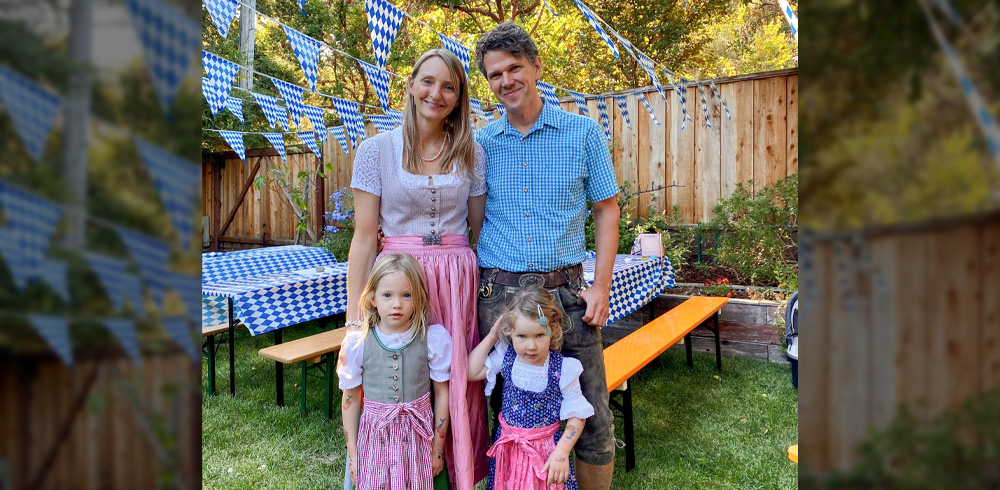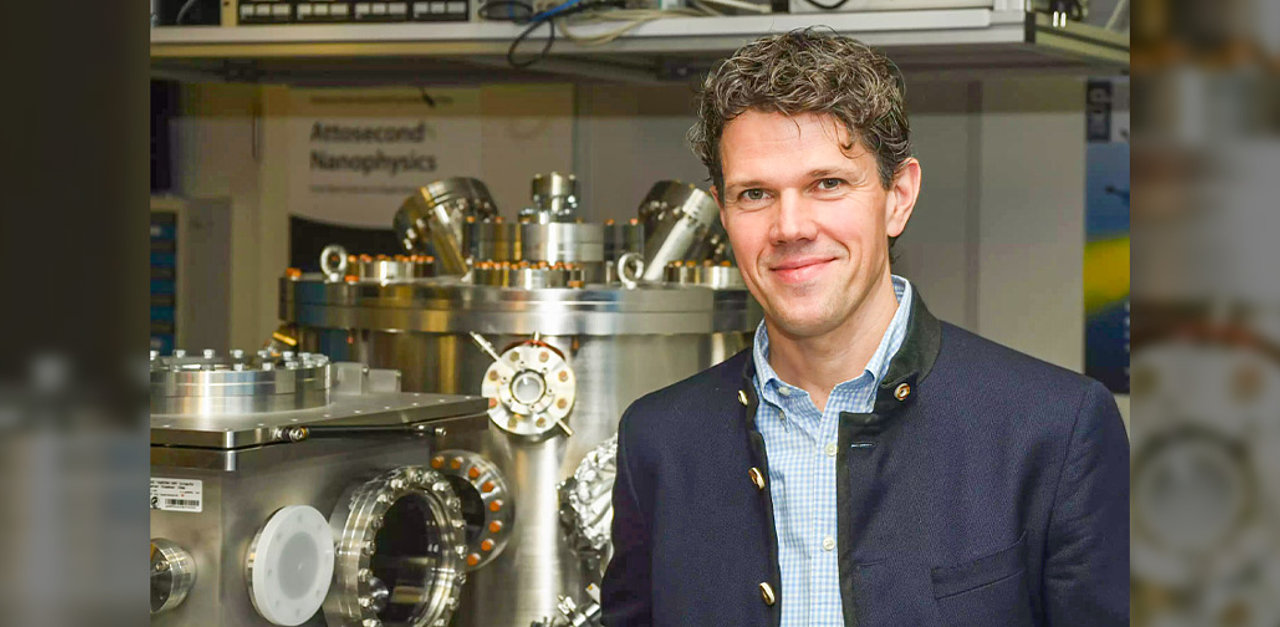You've been in the USA with your family for a year now. How did the move work out?
It was a very drastic experience, especially because we moved as a family of four with all our household goods, in the middle of a global pandemic. With our small children, eight suitcases, two child car seats, prams, a lot of hand luggage, and a cat, we set off on our journey just before Halloween. The rest of our household goods were shipped by container. The day of the move felt like the longest day of our lives. But everything went well. We had friends by our side on both the German and American sides who helped us cope with the departure and arrival. We had to wait six months for our container from Germany because of the pandemic, which felt very long. It creates a kind of homesickness, not for home, but for the "life" that comes with all the personal things. It felt like Christmas when the container finally arrived, especially for the kids who had missed their toys and books. Now, a year later, we have found a nice home in a very nice neighborhood and we have finally really "arrived".
How was the adjustment to American conditions?
The first three months felt more like being on vacation. But after that, reality set in and it took a long time to establish a new normal. In principle, everything is different. This includes many otherwise simple things in life, such as a bank account, drivers license, insurance, or even suitable doctors. The health system is completely different. It took forever to understand which doctors were in-network or out-of-network, and what our insurance really covered. We also had to reorient ourselves when it came to shopping. Some products you simply can't get in the US. We had some things sent from Germany in the beginning, but in the meantime, we have been able to switch to local products. Our children are our top priority in everything. They have adapted much more quickly to their new home. On our last visit to Germany in the summer, our youngest wanted to go "home" again after a while. She was actually referring to California. The children were placed in a very good English-speaking preschool from the beginning. In the meantime, English has become their second mother tongue. It is enviable how quickly and easily children of this age learn a new language and embrace a new environment and culture.

What is the biggest difference between life in Germany and in the US?
That depends a lot on where you live in Germany and even more on where you live in the US. I can only directly compare life in Bavaria and California. In principle, the standard of living and also the recreational values are very high on both sides. In the US, there is an underlying friendliness in dealing with each other that we very much like. On the other hand, the social and health care systems in Germany are on a level that you can only wish for in the US. In Silicon Valley, where we now live, science and creativity are much appreciated and promoted, which is great. Here, the great challenges of humanity, such as climate change or the next technology revolutions, are topics that people talk about every day. That is very inspiring.
You have established a second research group at Stanford University? What topics do you deal with there?
In my group we deal with photonics on extreme length and time scales. Applications include research into new materials for quantum technologies, ultrafast nanoelectronics, and renewable energy generation (https://uen.stanford.edu/). Together with colleagues from Stanford University, we are also looking at applications of photonics in sustainability. One example is a project on the emission and dispersion of pollutants from wildfires and their impact on our health. Wildfires are a very topical issue that we need to address globally. At SLAC, we use the Linac Coherent Light Source (LCLS) free-electron laser (FEL) for this research, in addition to ultrashort laser technologies. At the LCLS, where I am Head of Science, Research and Development ( https://lcls.slac.stanford.edu), we can generate very energetic X-ray flashes with pulse durations in the attosecond range. We are currently commissioning the new generation LCLS-II. LCLS-II is based on a superconducting linear accelerator. It can generate pulses with repetition rates up to 1 MHz, and thus has about 10,000 times more power than LCLS. A good media report on LCLS-II can be found here: https://www.youtube.com/watch?v=6XTII6qaAxc. LCLS can be thought of as a microscope into the microcosm, which allows filming ultrafast processes with the highest spatial and temporal resolution. This can provide transformative insights that allow us to better understand nature and develop new technologies. It is an exciting time with a lot of pioneering work and possible scientific discoveries in the coming years.
What is it like to lead two research groups at different times? One in the US and one in Germany?
It is certainly not easy and requires very high prioritization to do it successfully. But it works much better than expected. A key factor is that there are experienced scientists on both sides who support the supervision of postdocs and PhD students. In Germany, we are part of the Laboratory for Attosecond Physics. This affiliation provides a stable framework, the infrastructure, and the necessary team spirit. In the US, we can use the new beginning to reinvent ourselves and set new research goals. These include research with FELs and applications of photonics in sustainability. Our horizons have expanded greatly at SLAC and Stanford University, and the environment is very inspiring. We are aspiring to contribute to solutions to important questions and problems facing humanity.
Do you have one or two tips for students or doctoral candidates if they want to work in the USA?
My tip would be to make contacts early on. The barriers become much smaller if there has already been a conversation at a conference or following a lecture at your home institute. Engage every good opportunity to present your research and yourself. There are many exciting opportunities in research and development in the US. The experience of having lived and worked in the US is very enriching. My first research stay in the US as a PhD student, already at that time in California, opened up completely new horizons for me. Another tip is not to give up easily. As long as you have a clear vision and scope, something good is going to come out of it, even if not in the way you first had in mind.
Are there career opportunities in your research group for our attoworld members?
Absolutely! They exist either directly in my group or at SLAC. Besides the possibility to join us as a PhD student or postdoc, there are also tenure-track positions at SLAC. Should you be interested in this, I am happy to support your application for funding from e.g. the DFG, Alexander von Humboldt Foundation, or EU. These grants come with many benefits, such as a lifelong network, a stronger CV, and often family allowances. My door is always open - so get in touch!
